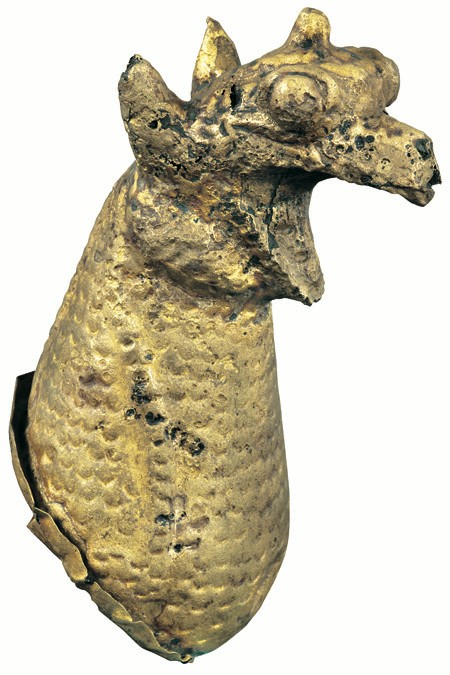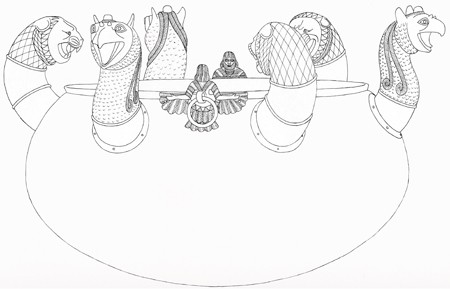The most radical innovation introduced by the Orientalizing cauldrons was the affective lifelikeness of their monstrous attachments. For example, griffin protomes forcefully propelled themselves outward and scanned their environment with laser-sharp eyes. Their aggression and visual acuity necessitated new strategies of engagement and response from their viewers. What happens when new media require new perceptual modes? What is at stake when viewers are unprepared to process new stimuli or when their existing modes of response are short-circuited or break down?
When introduced into centuries-old societies whose cultures had never been highly visual, the cauldrons must have caused shock similar to that experienced by spectators of the first film projections in the last decade of the nineteenth century. During my residency at CASVA, I delved into recent theoretical understandings of audiences’ responses to early film to gain insights regarding the complex emotions generated by the cauldrons and their monsters. Both media challenged viewers to confront and negotiate the seemingly threatening illusionism of their visual rhetoric: the aggressive thrust of griffin protomes into the actual space of the beholder is qualitatively akin to the assaulting motion of a train that threatens to violate the spectator’s physical space. In the latter case, the powerful effect of the moving image is predicated on what film critic Tom Gunning has dubbed “the aesthetic of attraction”: the moving image assaulted the senses of unprepared spectators who surrendered to fear and surprise even as they realized the artificiality of the new medium and became conscious of their role as engaged viewers.
I argue that the aesthetic of attraction of early film allows insights into the formal, sensory, and affective properties of griffin cauldrons. The modern designation of griffin protomes as apotropaic devices has occluded attention to their electrifying effect and to their programmatically designed ability to enchant and captivate the mind and the senses. However apotropaic the monster cauldrons may have been, they directly addressed their viewers’ emotions as well as their intellects. Vacillating between fear and sensory attraction to the cauldrons, viewers would have gradually become conscious of their “seeing” as visual scrutiny disclosing the numerous material, technical, and formal qualities of the cauldrons and their attachments. Fear, that is, morphed into curiosity and scopic delight generated by the viewer’s aesthetic discovery of the frightful object. Exclusive to the elites of both Italy and Greece, these novel modes of sensory interaction with affective objects were constitutive of a new visuality as well as of new narratives, subjectivities, and social distinctions.

